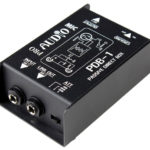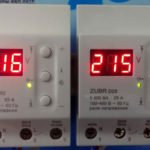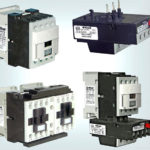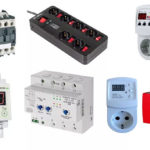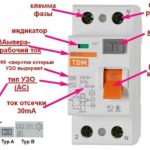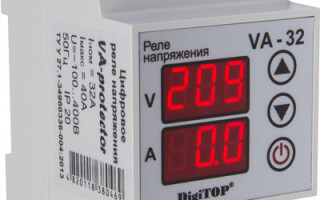Thanks to technological advances in electricity are connected to almost all objects of real estate, where there is a person. Electricity is used for lighting, power devices and appliances necessary for normal life. Unfortunately, end-users encounter technical problems during the operation of the power grid, including voltage fluctuations and phase imbalances. To keep household appliances safe, voltage relays are used.
Synopsis of
Voltage relay - what is it and what is it for
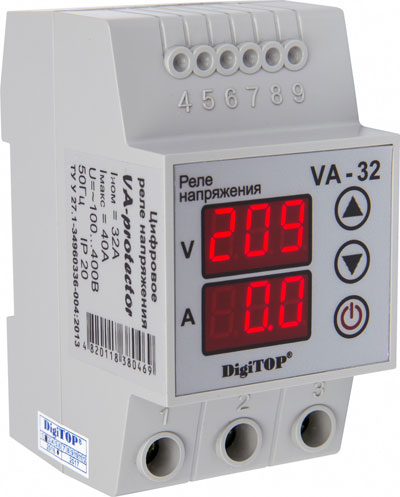
The nominal supply voltage of machinery is 220 V. But it is impossible to ensure ideal transmission conditions, so consumers are constantly seeing surges in the network. Especially often the problem is faced by residents of apartments in old high-rise buildings and the private sector.
Important: A deviation from the nominal value within 10% is normal.
Voltage monitoring relays (RCN) - a technical device designed for continuous monitoring of network parameters and automatic power off in case of sharp voltage spikes. The device triggers if the values are out of the set values.
In other words, the device protects electrical appliances from voltage fluctuations in the network, which could arise due to a short circuit of one of the phases, zero break, phase imbalance, etc. It is worth noting that appliances are negatively affected by both excessive and insufficient supply voltage.

Design and principle of operation of a voltage relay
Voltage relay consists of two main parts - The measuring unit and the electromagnetic relay, designed to interrupt the circuit. The newer models have a digital display on the front panel to indicate the voltage value in the mains.
The principle of operation of the voltage relay is quite simple. When the voltage is applied, the measuring unit determines its value and compares it with the set limits. If the value is between the lower and upper limits, after a set period, the relay closes the power contact and transmits power to the internal network.
Reference: The relay has a delayed tripping interval to safeguard the mains from constant surges.
Basic Specifications
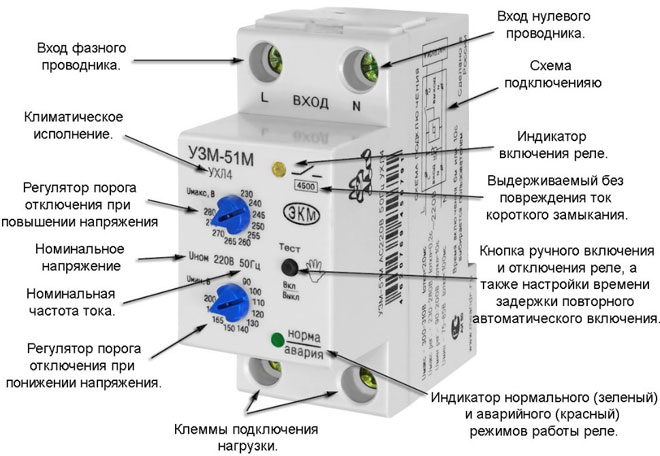
Most relays operate at voltages between 50 and 400 watts. This wide interval allows you to use the device in both single-phase and three-phase grids, as well as the flexibility to adjust the desired limits of operation of the protective device. Of the main technical characteristics should be distinguished:
- supply voltage;
- maximum load power;
- maximum load current;
- enclosure degree of protection;
- switching resistance of relay contacts;
- time of switching off the load;
- maximum cross-section of the wires to be connected;
- delay time on switching on;
- dimensional parameters.
Classification and types
Different devices are needed to protect the power grid of a private home, apartments in old and new housing stock. Voltage relays are divided into two categories:
- according to the type of connection;
- According to the number of phases.

According to the type of connection
There are two main categories of voltage relays, depending on how they are connected:
- stationary;
- portable.
Stationary monitoring devices are divided into two types. Devices for installation in electric boards and built-in sockets. Let's consider each type in more detail.
Voltage relay installed in the switchboard has a number of advantages. The device is mounted at the mains input to protect all electrical equipment in the house or apartment. If it is used, there is no need to use additional relays to protect individual consumers, which significantly saves the budget.
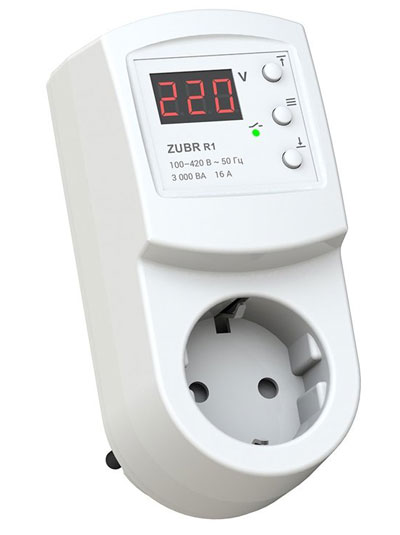
Outlet voltage relays are a great alternative when it is not physically possible to install the device in the switchboard. Outlets are used for point-to-point protection of appliances such as refrigerators, boilers, washing machines, etc.
TipTo save your budget, look for double-socket outlets!
There are two kinds of relays - a plug and an extension cord. They are used when installing a protective device at the mains input is not possible. Despite the cumbersome parameters, portable devices are in demand. This is due primarily to their portability and ease of use (no installation required).
The plug socket is designed to protect only one consumer. The device connects to a standard socket and monitors voltage drops in the node without monitoring the overall status of the network. Suitable for protection of expensive and powerful electrical appliances.
Extension cord with a built-in control relay is used to protect a group of devices from changes in the network. Convenient and simple solution has only one major limitation - the maximum power of the load.
According to the number of phases
Depending on the type of power supply, there are two types of relays:
- single-phase;
- single-phase; three-phase.
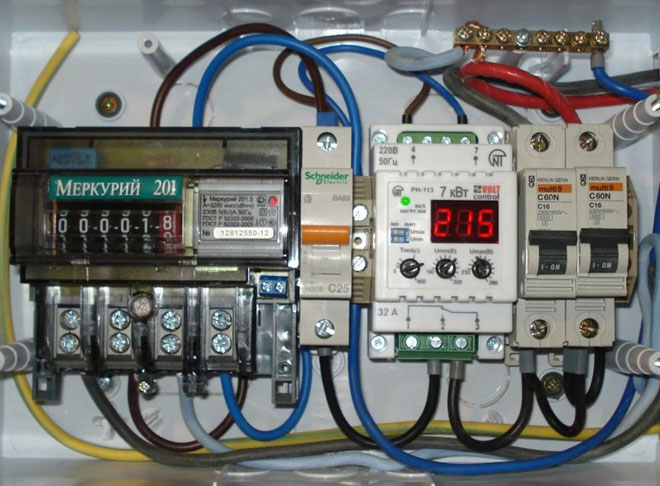
Single-phase relay is designed to monitor electrical networks with an operating voltage of 220 V. When properly configured, the device is suitable for the protection of almost all household appliances.
Three-phase protection devices are used mainly in country houses and new housing stock, where the connection by three-phase supply circuit is provided. And . RKN Monitors the voltage of each phase.
Rules for selecting a voltage relay for the apartment or house
Approach the choice of a voltage relay must be chosen wisely, because the device is responsible for the safety of the network and electrical appliances. Proper functioning of the voltage relay is possible only if the technical characteristics are chosen correctly. When selecting a voltage relay it is necessary to take into account:
- the maximum load current and type of connection by phase;
- The maximum power of the consumer;
- operating voltage range;
- the protective operation time;
- control type (digital and electromechanical);
- degree of protection of the device;
- reliability (manufacturer and model reviews).
The main parameter when choosing a device - the maximum allowable current. You should choose a model one stage higher than the installed circuit breaker in the switchboard. If the maximum current of the circuit breaker is 32 A, then the relay should be 40 A.
Tip: It is worth paying attention to additional functions, such as digital display of voltage, device temperature, the ability to control time, etc.
Wiring Diagrams
There are two basic ways of connecting the RKN - direct, when the work load passes through the RKN contracts, and indirect, when the load is switched through contactor. The second method is necessary when connecting loads above 7 kW. Recommendations for connection:
- Mount the relay should be after the electricity meter;
- Install a protection device before the RCCB (circuit breaker);
- The accessibility of the device for maintenance and visual control of the work.
Connection of single-phase OLTCs
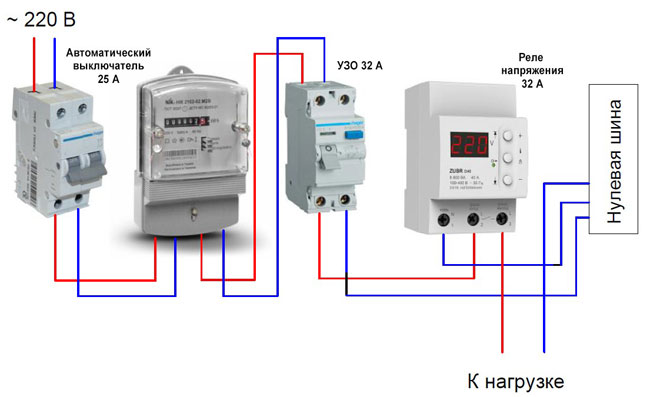
Single-phase OLTCs are connected directly to the mains, and the mains operating current flows through their contacts. Normally, the relay is preceded by a residual current device (RCD) or a residual current device (ARD). A residual current device or a residual current device for leakage current protection. The connection algorithm is as follows:
- Zero from the input circuit breaker is connected to the neutral bus and then to the N terminal on the relay.
- The phase wire is connected directly to pin L.
- The third output of the RCN is for connecting the load, ground and zero for which is taken from the busbars.
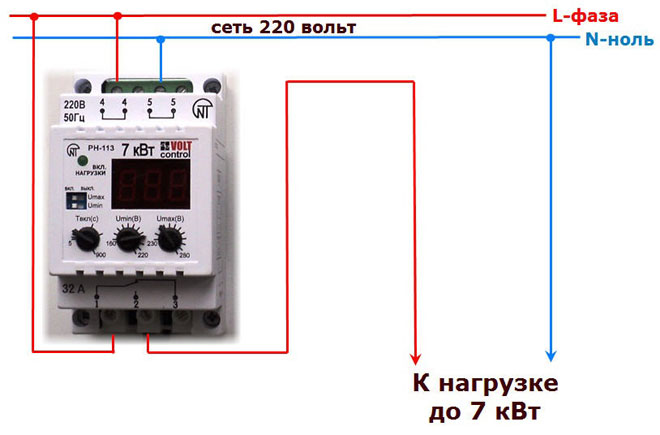
Connection of the three-phase OLTC
To connect the three-phase OLTC directly, you must:
- Connect the phase wires of the three-pole input circuit breaker.
- Install the RCN by connecting the phases and zeros to the corresponding terminals.
- Connect the phases and zeros to the outputs RCDS ..
- Turn on the load, connecting the earth and phase, and zero from the N-bus, installed after the RCD.
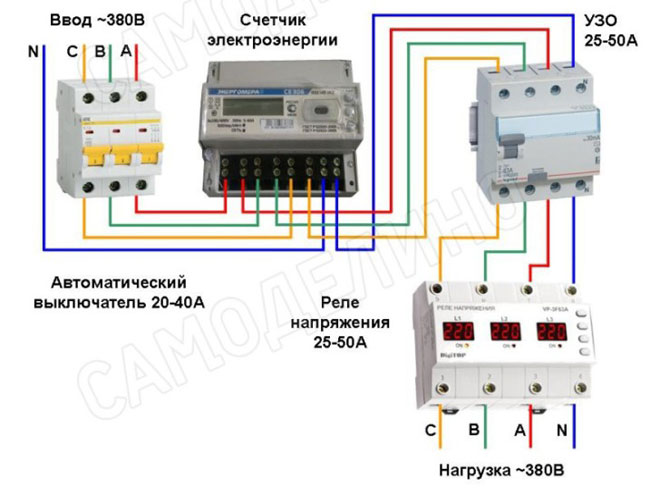
Wiring diagram for high current consumers with a contactor
When the currents to be switched are much greater than the maximum permitted value of the RCCB, the device is used in conjunction with a magnetic starter (contactor). When selecting devices, attention should be paid to the speed of operation - the lower the speed of operation of both devices, the better.
AdviceIt is cheaper to buy a contactor and a voltage relay than to choose the RCN for high-power consumers.
The circuit differs from the conventional connection in that after the circuit breaker a contactor is installed which switches the load. The relay is connected in parallel to the starter and only monitors the voltages. In case of significant deviations, the RCN trips, de-energizing the contactor coil, which leads to disconnection of the load.
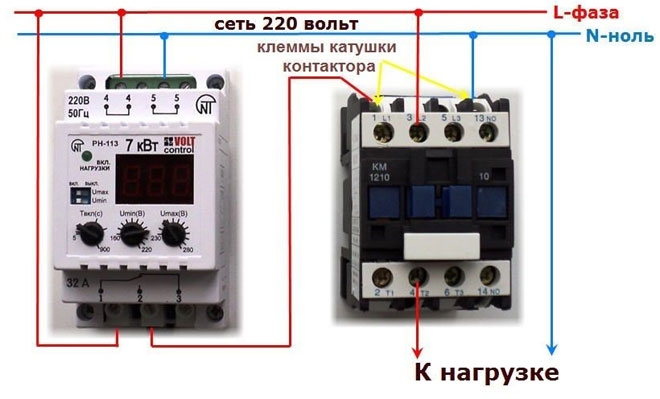
Adjusting operating modes
Regardless of the type of relay, there are three basic parameters for setting:
- Upper voltage limit Umax - is responsible for the maximum permissible value in the network, exceeding which will lead to a blackout.
- The lower voltage limit Umin - is responsible for the minimum permissible value in the network. Decrease of the reading below the set figure will lead to load disconnection.
- Delayed switch-on time - is the time for the power supply to be switched on again after it has been switched off. The device switches on only if the voltage is within the set values. As a rule, the delay time is set in seconds.
Tip: if there is an air conditioner or a refrigerator in the room, the delay time should be more than 300 seconds.
To change the parameters, use the mechanical or digital buttons located on the front case of the device. How to properly change the settings of the device is described in the instruction manual.
How to test a voltage relay
All devices are tested by the quality control department before reaching the end user. If you are in doubt about the functionality of the voltage relay, you can test it in the following ways:
- Measure the voltage Using a multimeter or a voltmeter between the phase and neutral terminals. The value should match the reading on the digital display. Note the error of the multimeter.
- Invite an expert with a calibrated meter to get the most accurate result.
Every year, more and more expensive appliances are added to homes. To ensure their correct operation and to save your wallet from expensive repairs, it is necessary to use a voltage relay. If it is not possible to install an RCN at the mains input, use portable devices.
Related articles:
